
Review: Campfire Solstice Custom IEMs
Dropping a couple of grand on customs? Campfire Audio presents an attractive option for those thinking outside the box.
Custom IEMs. You know the drill. See what the options are from Ultimate Ears or Jerry Harvey, go down to the audiologist, insist you’re not deaf, face the confused clinician as they fill your ears with goo and send them to the US for a new pair. Easy.
Delve a little deeper online, and you will find a world of tiny companies making customs. Some specialise in it, others make the odd custom in limited numbers based on their generic designs. One of the bigger players is Campfire Audio, which takes a unique approach to their shell manufacturing, fit options and acoustic design.
FATHER & SUN
The Solstice follows after a legendary release by Campfire: the Andromeda. Heard of it?
For those less versed in the audiophile side of life, this stellar IEM enjoys great respect amongst it’s sub-$2k peers. When surfing the audio enthusiast corners of the web, mentions of the ‘Andro’ are ubiquitous as a yardstick to measure balanced armature-based IEMs by. Or even as a ‘gatekeeper into the kilobuck IEM market’ (come again?), one writer on the HeadFi forum puts it . They’re a common part of collections, universally liked, if not respected and well known enough to make a good point of comparison for headfi enthusiasts.
And for good reason. Released in 2016, the Andromeda established a reputation for a classy, balanced tuning. Not necessarily reference (too flat), but a balanced neutral tuning that was likeable without overhyping certain registers. One that’s applicable to all music genres and trustworthy as a reference. Some describe its tuning as ‘U-shaped’ (or ‘smiley-faced’, as audio people would say), emphasising a little of the sub bass and treble — thump and sparkle. So upon the announcement of the Solstice as a ‘custom Andro’, there was good reason to get excited.
CHAMBER MUSIC
Balanced armature drivers, like the five in the Andromeda, all have their own individual tuning. Some have a full range sound and fare well in a single-driver configuration, while those used in concert with others will specialise in a specific frequency range: sub, woofer and tweeter style. To get a quartet (or quintet, for that matter) of drivers to sing in tune, the designer has to specify what frequency each will start and stop at. Most use passive crossovers like you’d find in a studio monitor, but not Campfire.
If not using an electronic crossover, then what? Give the drivers very specific acoustic spaces to breathe in, and allow those to shape the sound — not dissimilar to the filters and acoustic chambers used in a dynamic driver IEM by Sennheiser. In each Andromeda (and each custom Solstice unit), there is a 3D printed interior enclosure that acts as that acoustic crossover. Within this structure, the drivers fire freely into space, rather than down tubes as you’d see in any multi-driver custom from UE or Jerry Harvey. Additionally, my friends in the audiophile world say this allows for a greater sense of space — hot property in the IEM market where most don’t escape the piped-into-your-head soundstage. The dual high-frequency drivers fire into a specific box Campfire calls a Tuned Acoustic Expansion Chamber, which they claim “delivers extended high frequencies without sibilance or fatigue”.
In the Solstice, none of this changes too much. The tuning chambers are printed directly into the interior of each custom enclosure, where their positions are adjusted to provide the best sound for the user’s specific ear impressions.
The result is a properly unique-looking cIEM.
You won’t see many other customs looking like Campfire’s. The solid body construction allows the Solstice a clean, seamless aesthetic that, with the high-polish chromed cap, is enough to get any black-nail polished emo rocker to eat their heart out. These Campfires look hot.
They’re also devilishly comfortable.
NEED TO KNOW
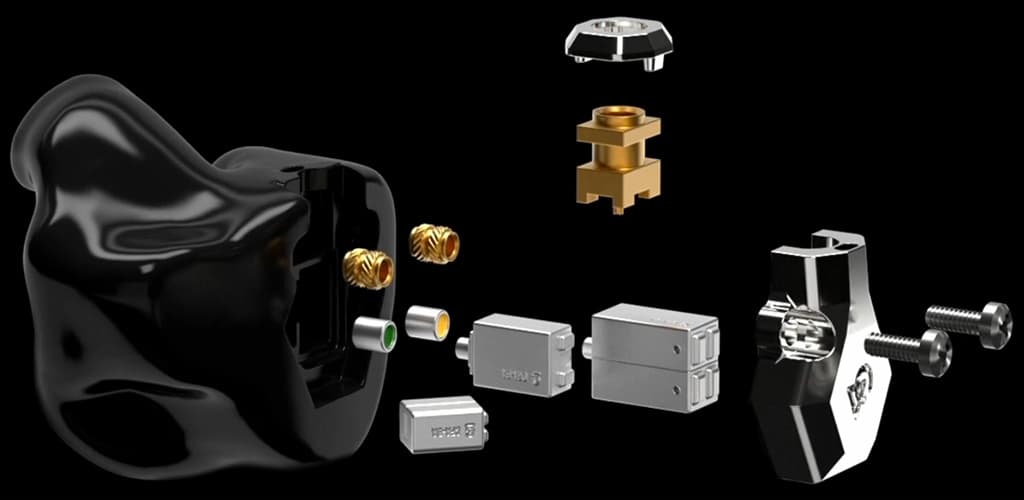
GETTING INTO SHAPE
Another unique point of departure from your typical custom is a choice of insertion depth. You’ve probably heard whispers of some IEMs being eardrum-tickling levels of invasive, while others not providing the isolation you’d typically seek out of a custom-fitted unit. All the major brands will create a mould of your ear canal and pina from your impressions, then cast an acrylic case from that mould, papier-mâché style. When Campfire receive your impressions, they 3D scan them and will set the insertion depth to your preference: Artist or Audiophile fit.
Artist fit is as you’d expect: right into the ear canal, past the second bend, providing maximum isolation and security of fit. Jump around, smash guitars into amp stacks, you name it.
For many of us, we don’t make the kind of tour dollars to spare an SG for smashing purposes. If the closest you get to touring is stopping all stations rather than going express, then consider the Audiophile fit. They probably suit many non-musos far better. Monitor engineers will really appreciate being able to whip them in and out without twisting. Mixers and producers will benefit from the comfort of reduced insertion depth. Commuters, too, will love the convenience. If extra depth won’t benefit you, it’s a great reason to look toward Campfire.
IN USE
Solstice’s lovely, if unconventional, packaging makes a good first impression. Upon opening the overlapping radial leafs enclosing the inner box, I was met with gorgeous night sky artwork inlaid on the textured cardboard. It’s a great introduction to what feels like a bespoke, boutique experience. Very homely, very pleasant. This ain’t you’re Unit #23546, mass-made Sennie. Not even one of hundreds of JH Audio customs made that day. My Solstice’s really do feel like my own.
As does the fit. The high gloss black shells feature the exact shape of my ear, smoothed out to a more shapely, gentle contour than the real-deal silicon from the audiologist. After a quick backward twist, the earphones sit snug up in my ear, no movement or room to breathe between my skin and the shell. They aren’t exceptionally heavy or outward weighted, never pulling or tugging on my ear. My Audiophile Fit pair slot in and out of my ears quite easily, especially when I nail the rotation needed for them to fit. No struggling with sliding them past the second bend, and less faffing with deeply embedded earwax as they don’t delve too deep. The nozzles easily fit the included wire cleaning tool to remove pesky wax when you do run into encroaching goo.
Once in, they isolate well, if not exceptionally. Enough to pick out the musical details well enough in a noisy room, but nowhere near ‘active noise cancelling’ levels of solitude. After testing them with dynamic classical music in a shopping centre, they rate better than good silicon tips, but not by much. The benefit of the Audiophile fit is comfort and longevity rather than sonic isolation — you’re better off sitting down and critically listening with these, rather than being on the move.
One thing I’m not a fan of is the included cable, which lacks heft. It’s thin, quite microphonic and most importantly for me, the earloops are not mouldable, which made it difficult to get the cable over my ears. These are personal gripes, granted, but concern enough for me to seek out an alternative cable.
AN AUDIOPHILE INDUCTION
Before I discuss sound, a quick primer on audiophile sound is warranted, as Campfire very much resides on that side of the fence.
For many audio enthusiasts, one great pair of IEMs is not enough. Owning just one may even be missing the point. For them, different units suit different genres, and will be mixed and matched with sources and cables to garner optimal results for specific purposes. Some amps pair better with the impedance curve of more source-dependant IEMs. Some cables add brightness, others greater channel separation. It is all a subjective game of taste. Tinkering is part of the fun, and finding the perfect source (amplifier + DAC) for a given IEM is often part of the process. I’m making gross generalisations here, but I have met some of these people, and I indulge in some of these activities myself — case in point, upgrading my cable.
Just like me and my taste in cables, the Solstice can be somewhat fussy. Foreign concept to you? Fair enough. Most pro-oriented earphones are specifically designed to have an average sensitivity, so as not to be too loud when plugged in, and a reasonably flat impedance curve, meaning the source’s output will minimally affect the tuning of the IEM. For example, my Sennheiser IE 100 Pro work great no matter what I plug them into, and your workhorse Shure SE Series or Etymotics probably respond similarly. Not so with the Solstice. My first impressions was with an Apple Lightning dongle, and I found the sound to be pretty unsatisfactory.
Audiophile Fit will suit many non-musos far better
SINGLE ‘PHILE
But fear not, as we enter audiophile world. And once I hop the fence into greener, tweakier pastures, the Solstice’s seem more comfortable. More at home.
Out of the box, I did find the Solstice really quite dark, with a heavy emphasis on the low mids. It made most tracks sound muddy to my ears, especially vocal-focussed ones. Driven with a low quality amplifier like the aforementioned little white dongle, the bass and mids collide in a resonant spike. With the BTR5 portable DAC+Amp from Chinese audiophile mainstay Fiio , there seemed to be better separation between these ranges, as if the dual woofers and mids driver were producing less of the same frequencies. Vocals came forward somewhat, the bass response tightened up significantly, and the overall tonality became less dark. Still, the overemphasis in this region remained, and was hard to look past. This isn’t characteristic of the Andromeda and not the balanced tuning I was expecting.
However, with EQ applied to carve out the low/mid hump and a high shelf boost from 1k upward, the Solstice really shows its strength. For a pair of in-ear monitors, the Solstice renders a wide soundstage almost headphone-like in scope. Depending on the amplifier used, the stage ranges from diffuse and dreamlike, to wide and focussed with good instrument separation, as with the Fiio. Overall, the spatial experience is truly immersive, as much as I loathe to use the buzzword. Rather than feeling the music piped into your head, listening feels intimate, yet wide, in a way I’ve only heard from unusual planar magnetic IEMs.
With the low-mid resonance scooped out, instrumentals are where the Solstice best shows its worth. Percussion especially has a very convincing presence, with an immediacy afforded by the super-quick transients of the balanced armature drivers. The high end snaps quickly, and the low end has a satisfying weight and slower than reference decay, giving percussive elements gratifying impact and bass instruments convincing texture. Thumping strums on a semi-acoustic struck me as an especially good example of that.
The intricate percussion arrangements in Snarky Puppy’s recent track ‘Trinity’ are rendered in their great breadth of timbres and textures, with impressive depth and clarity. Shakers are well localised and quick while washes of cymbals maintain their granularity across space as they emanate outward. Similarly, horns are lifelike and reverb wide and high. Spurts of comping from rhythm guitars sneak through the texture well, not with holographic clarity but enough to make their presence known. EDM is also a really enjoyable listen, as is instrumental hip-hip. Bass response is big, without losing its tightness.
The Solstice renders a wide soundstage almost headphone-like in scope
TRUST ISSUES
For all my EQing, vocals tracks on the Solstice remained unconvincing. Male vocals especially get caught in the low/mid resonance, while female vocals suffer less if there isn’t too much proximity effect. To my ears, the production of sound by both the dual woofer and the mids in this range, untempered by a passive crossover, makes vocals either boomy out of the box, or too far back in the mix once EQ’d. More tinkering would get these IEMs closer to my idea of ‘fun-reference’ tuning, which seems to be neutral with a 6dB of bass and sparkly Beyer headphone treble, but for now, they remain only near to my ideal.
And with that very audiophilic comment, I’ll bring us back over the fence to the pro world…
“Wait, what? You’re saying I have to apply EQ to my master bus to mix with these? My iPhone doesn’t even have custom EQ!”
“Impedance and source matching? Shouldn’t IEMs just work?”
Valid questions, pro audio comrades.
IEMs for us are audio tools. Something used for a mix check to see how stereo is translating, on-stage for inspiring confidence or on-the-go with your phone for some casual listening. They should be utilitarian and reliable, whether a cheap pair of generics or wallet-busting, bedazzled 59-driver customs.
With their super-high sensitivity, it’s hard to get much variation of volume out of the Solstice on a laptop, as two bars of volume was as loud as I would want on my Macbook. And plugged into that kind of lower quality amp, or a beltpack receiver for that case, the drivers of the Solstice don’t respond optimally. All this while neglecting to mention EQ, which to my ears, is needed to get these to a pleasing, let alone reference, tuning.
The Campfire Solstice are a wicked-good looking, very comfortable, immersive custom in-ear monitor. Its unconventional design leads to big wins such as the flexible fit options, but also to losses, like the acoustic crossover between the woofers and mid driver. As a trustworthy tool, they are difficult to recommend, unless you are working on exclusively instrumental music. But if you’re a little more adventurous and willing to experiment, you’ll be rewarded with a really enjoyable listening experience with unmatched soundstage and great bass response. Just prepare yourself to jump the fence into audiophile land. Is the grass greener? I can’t say for sure. It’s a subjective game of taste.


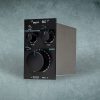








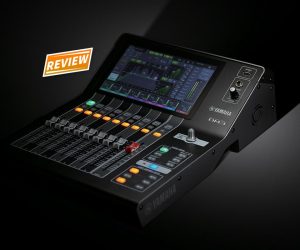
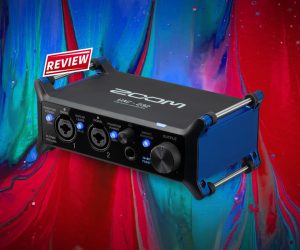
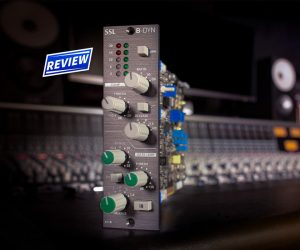
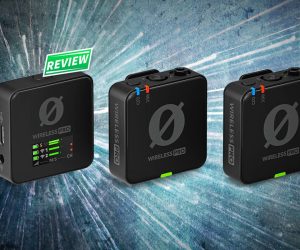
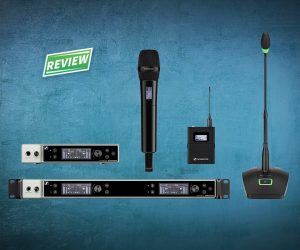
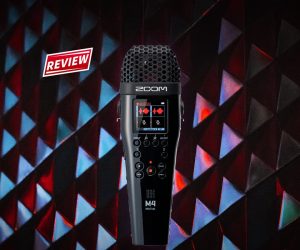



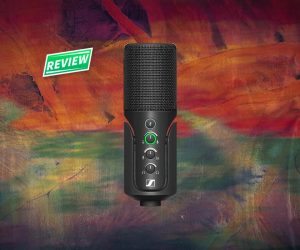


RESPONSES